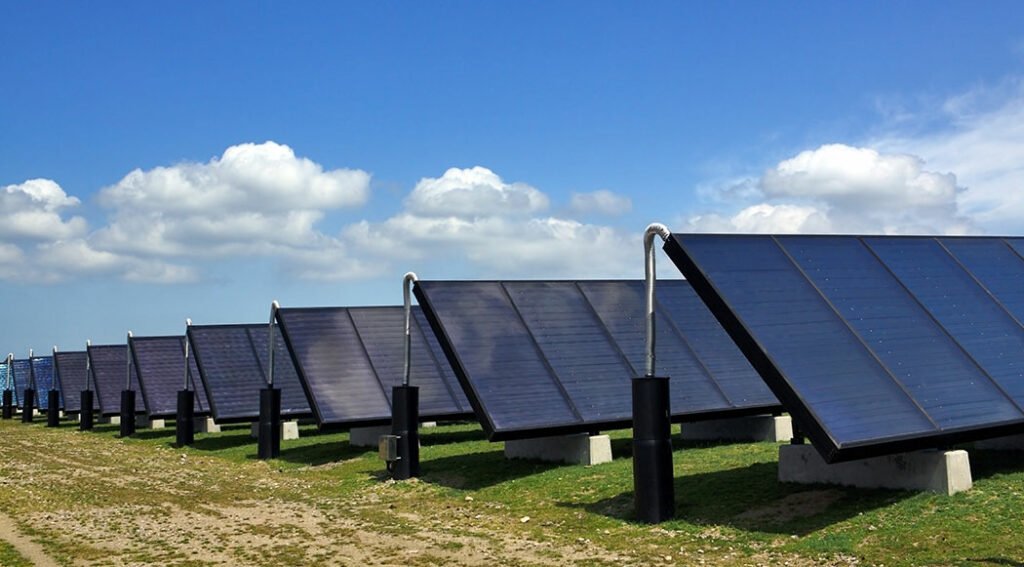Soaking up the rays?
With half the world’s energy consumption used for heat in residential and industrial applications[1], it is no wonder that governments are looking to diversify their heat production. Renewable sources such as solar thermal are increasingly popular – and not just in hot countries either – Denmark is one of the leading supporters of large-scale solar thermal heat supply systems globally!
The key to solar thermal success?
Maximising solar yield, whilst keeping investment, operational and maintenance costs low is key to a solar thermal plant’s success. Not to be overlooked is the absorption rate performance of the collector modules, as these can significantly influence the lifetime yield of a plant.
Traditionally, coated aluminium strips are the absorber material of choice for domestic and industrial application collector modules. This is due to their cost-effectiveness and durability. However, the coating material used impacts on solar absorption and emission rates.
These are the things to look for when choosing the right solar thermal coating for your collector modules:
- What is the surface coating’s solar absorption rate?
- What is its emission rate?
- What level of corrosion resistance does it offer?
Selective absorber coatings for aluminium or copper strips
As a leading solar absorber surfaces specialist in the UK and across the globe, our thermal absorption surfaces have been fine-tuned over the years to offer industry-leading absorption performance. Our selective absorber coatings have solar absorption rates of up to 97% and emission rates as low as 4%. This is all backed by a 10-year outdoor material warranty.
For temperature fluctuations:
Alanod’s mirotherm® Control has integrated protection against overheating, whilst offering up to 97% solar absorption. Its smart reaction to temperature influences also means it can tolerate up to 40 °C lower stagnation temperatures, compared to standard systems.
For proven performance:
Alanod’s mirotherm® solar selective absorption coating delivers up to 96% solar absorption and its IR-reflective layer ensures low thermal emissivity. Its oxide absorption and antireflection coatings provide maximum solar absorption and resistance to external influences.
For a wide range of applications:
Alanod’s eta plus® is our semi-finished product for solar thermal systems and is used in absorbers for flat-plate collectors with full-surface or strip absorbers, in tube collectors as well as in air and large-scale façade collectors. It achieves a solar absorption rate of 95% with a low thermal emissivity level of 5%.
For tough conditions:
Alanod’s mirosol® TS is ideal for regions with high solar radiation. During its manufacture, a selective, hydrophobic lacquer is applied to aluminium in a specially developed process. As a result, it has high resistance to heavy environmental pollution, salty air, moisture, condensation, oil, and dirt as well as a low stagnation temperature.
Selective absorber coatings might be a small part of the thermal heat supply system but choosing the right one can have a significant impact on solar yield over the lifetime of a plant. Why not contact one of the leading solar absorber coating specialists to find out how we can help you increase efficiency over the long-term?
[1]. Z. Tian, S. Zhang, J. Deng, J. Fan, J. Huang, W. Kong, et al. Large-scale solar district heating plants in Danish smart thermal grid: Developments and recent trends Energy Convers Manage, 189 (2019), pp. 67-80, 10.1016/j.enconman.2019.03.071

